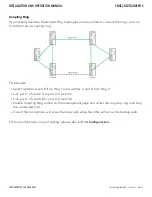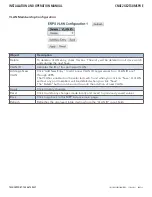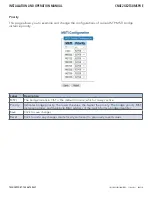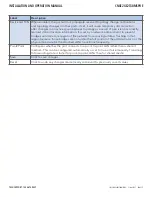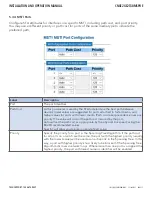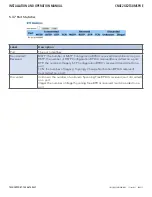
INS_CNXE2GE2TX8MSPOE 11 Jan 2021 PAGE 27
INSTALLATION AND OPERATION MANUAL
CNXE2GE2TX8MSPOE
TECH SUPPORT: 1.888.678.9427
5.3 MSTP
5.3.1 STP Configurations
STP (Spanning Tree Protocol), and its advanced versions RSTP (Rapid Spanning Tree Protocol)
and MSTP (Multiple Spanning Tree Protocol), are designed to prevent network loops and provide
network redundancy. In large networks when two or more paths run to the same destination,
broadcast packets may enter an infinite loop and cause congestion in the network. STP can
identify the best path to the destination and block all other paths. The blocked links will stay
connected but inactive. When the best path fails, the blocked links will be activated. Compared to
STP which recovers a link in 30 to 50 seconds, RSTP can shorten the time to 5 to 6 seconds.
Label
Description
Protocol Version
The version of the STP protocol. Valid values include STP, RSTP and MSTP.
Forward Delay
The delay used by STP bridges to transit root and designated ports to forwarding
(used in STP compatible mode). The range of valid values is 4 to 30 seconds.
Max Age
The maximum time the information transmitted by the root bridge is considered
valid. The range of valid values is 6 to 40 seconds, and Max Age must be
≤ (FwdDelay-1)*2.
Maximum Hop Count This defines the initial value of remaining Hops for MSTI information generated at
the boundary of an MSTI region. It defines how many bridges a root bridge can
distribute its BPDU information to. Valid values are in the range 6 to 40 hops.
Transmit Hold Count The number of BPDUs a bridge port can send per second. When exceeded,
transmission of the next BPDU will be delayed. The range of valid values is 1 to 10
BPDUs per second.






